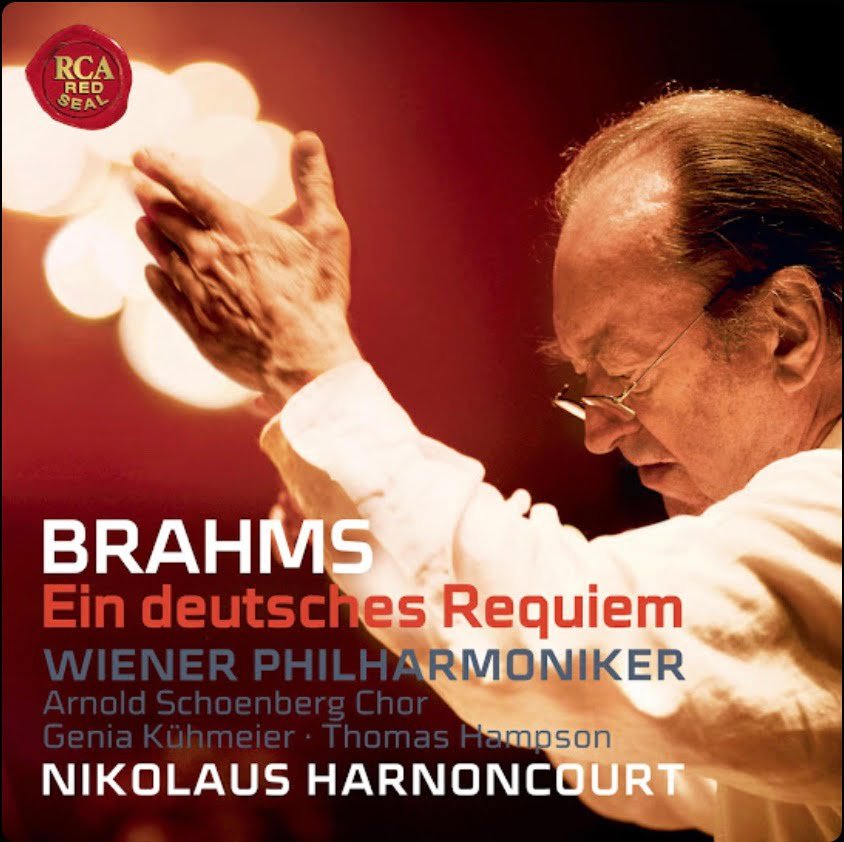Whygold’s Weekend
… under this motto I present you my music tip for the weekend.
Maybe one or the other discovers something new.
Consciously listening to music is, in my opinion, as important as reading a good book.
Today: Brahms – A German Requiem
https://music.youtube.com/playlist?list=OLAK5uy_nKhy4Wdt7lv2Xj_Zt7GlLrOY-A6vQg6Go
Ein deutsches Requiem nach Worten der Heiligen Schrift, op. 45, is a work by composer Johannes Brahms for soprano and baritone solo, choir and orchestra. It was composed between 1865 and 1868. In the final version it consists of seven movements.
A requiem is commonly understood to be the liturgy of the Mass for the Dead in the Catholic Church or church music compositions for the commemoration of the dead. Brahms, who grew up in Lutheran Hamburg, did not orient himself in the selection of his texts to the traditional canon of the Requiem as a mass for the dead, but chose from texts of the Old and New Testaments in the version of the Luther Bible primarily those in which the consolation of the bereaved is the focus. Brahms designed his German Requiem not as funeral music, but to comfort those “who bear sorrow,” i.e., as music for the living borne of seriousness, dignity, and confidence. The work therefore cannot and should not do justice to the church-musical genre of the requiem; in terms of the arrangement – especially the scoring – it can rather be described as an oratorio, even if the dramatic component is missing. In the text sequence, it most closely resembles the Protestant motet of earlier times.
In 1858 Johannes Brahms set sacred texts to music for the first time(Ave Maria op. 12 and Begräbnisgesang op. 13). In 1861 he then began compiling the texts for the Requiem. The texts of movements I-IV were written first; Brahms noted these on the back of the fourth song of his Magelonen-Romanzen op. 33. He also composed the first two movements in 1861. After his mother’s death in 1865, he seems to have resumed work on the work; in the spring of 1865, he composed the fourth movement, which Brahms sent to Clara Schumann as a piano reduction. Set III was probably created during a longer stay with the friend and photographer Julius Allgeyer in Karlsruhe, sets VI and VII probably in the summer of 1866 in Lichtenthal (near Baden-Baden) and/or in Winterthur. The present movement V was composed only in May 1868 and was inserted into the work after the first performances.
The first three movements – more were “not to be expected” from the audience – were premiered in early December 1867 by the Vienna Singverein at a concert of the Gesellschaft der Musikfreunde in Vienna. The work, then still in six movements, was performed in its entirety for the first time on Good Friday, April 10, 1868, in Bremen Cathedral under the musical direction of Brahms, after being rehearsed by Bremen Cathedral Kapellmeister Carl Martin Reinthaler. The fifth movement, which was missing from this concerto, was added afterwards. The complete work was premiered on February 18, 1869, at the Leipzig Gewandhaus by the Gewandhaus Choir; however, there had already been a private performance of the piano reduction with a small choir and soloists in Dessau on January 3, 1869, as Brahms learned from his friend Adolf Schubring.
(Source: Wikipedia)
Extremely interesting harmonic turns, especially in the chorus, create a very special atmosphere here.
Have fun listening to this album !
Your Chris Weigold
P.S.: Maybe you enjoy the listening pleasure together with a glass of wine from our “Orchester der Kulturen Edition”.

